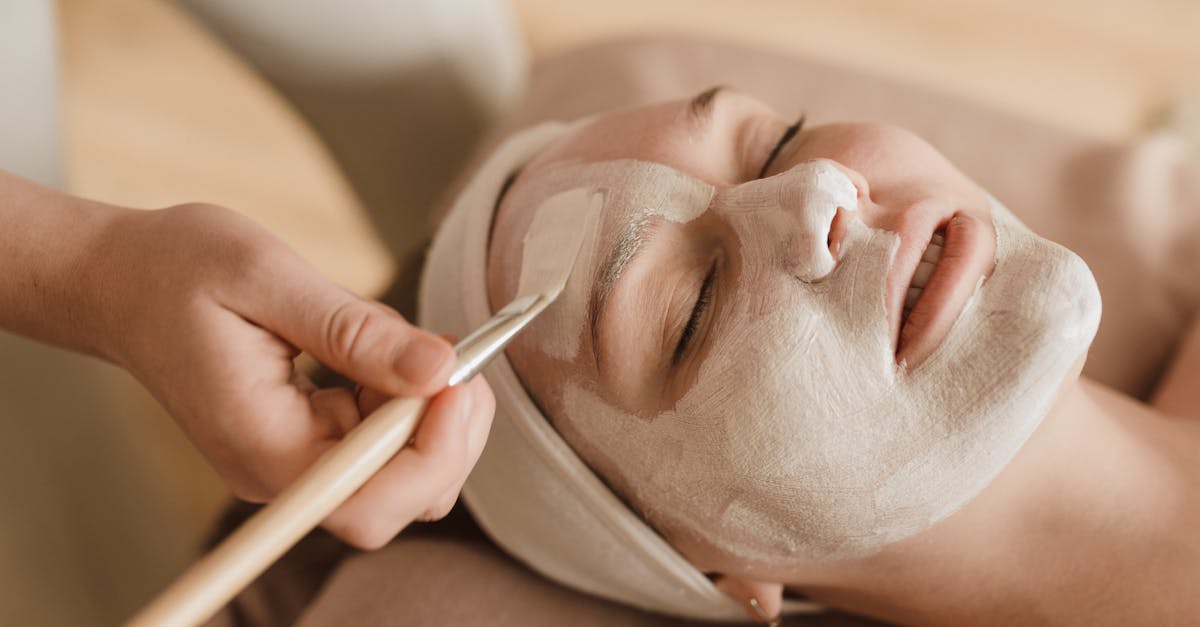
Preparing for a Chemical Peel: What to Expect
Aftercare Instructions
Aftercare following a chemical peel is crucial to ensure optimal results and minimize potential side effects. It is recommended to avoid sun exposure and to wear sunscreen daily to protect the skin from further damage. Additionally, refrain from picking or exfoliating the skin as it heals to prevent scarring and irritation.
Hydrate the skin with gentle moisturizers to help maintain its balance and promote healing. Avoid using abrasive or harsh products on the treated area to prevent irritation. It is important to follow the specific post-peel skincare instructions provided by your skincare professional to ensure proper healing and achieve the best outcome from the treatment.
Postpeel skincare regimen
Following a chemical peel, proper post-peel skincare is crucial to ensure optimal results and promote skin healing. It's essential to adhere to the skincare regimen recommended by your dermatologist or skincare specialist. Typically, this will involve gentle cleansing, moisturizing, and sun protection to protect the newly revealed skin and aid in the healing process.
During the initial days post-peel, your skin may be more sensitive and prone to irritation. Avoid harsh exfoliants, scrubs, or products containing strong active ingredients like retinol or glycolic acid. Opt for mild and hydrating products that soothe the skin and assist in maintaining its newfound clarity and smoothness. Additionally, diligent sun protection is paramount as the skin will be more vulnerable to sun damage post-peel. Choose a broad-spectrum sunscreen with at least SPF 30 and reapply as needed throughout the day.
Expected Results
Chemical peels offer a range of benefits in terms of skin appearance and texture. Following the procedure, it is common to experience a more even skin tone, reduced appearance of fine lines and wrinkles, and improved skin firmness. The exfoliation process involved in a chemical peel helps to remove dead skin cells, resulting in a smoother and more radiant complexion.
Additionally, chemical peels can aid in the reduction of hyperpigmentation, acne scars, and blemishes, leading to a clearer and more youthful-looking skin. Over time, as the skin continues to regenerate, patients often notice a gradual improvement in overall skin quality and a rejuvenated appearance. The results of a chemical peel can vary depending on the type of peel used and individual skin characteristics, but many patients report a noticeable enhancement in their skin's texture and vibrancy.
Achieving smoother and rejuvenated skin
Chemical peels offer a transformative experience, leaving your skin looking smooth, radiant, and rejuvenated. As the top layers of skin are removed during the peel, it stimulates the skin's natural healing process, promoting the growth of new skin cells. This leads to a more even skin tone, reduced appearance of fine lines and wrinkles, and a refreshed overall complexion.
Achieving smoother and rejuvenated skin post-chemical peel will depend on various factors including the type of peel used, your skin type, and adherence to post-peel skincare instructions. The exfoliation process triggered by the peel helps to unclog pores, improve skin texture, and stimulate collagen production, resulting in firmer, more youthful-looking skin. Consistent peels along with a good skincare routine will help maintain the results over time, keeping your skin looking healthy and revitalized.
Followup Appointments
Once you have completed your chemical peel treatment, it is essential to schedule follow-up appointments with your skincare specialist. These appointments are crucial for monitoring your skin's healing process and ensuring that you are on track to achieve the desired results. Your specialist will assess your skin's condition, provide any necessary post-peel care instructions, and determine if additional treatments are needed.
Follow-up appointments also allow your skincare specialist to make any necessary adjustments to your treatment plan based on how your skin has responded to the chemical peel. It is important to attend these appointments as they play a significant role in optimizing the outcome of your treatment and maintaining the health and appearance of your skin in the long run.
Importance of multiple treatment sessions
Multiple treatment sessions are often necessary to achieve the best possible results from a chemical peel. While some improvements may be noticeable after just one session, the full benefits of a chemical peel are typically seen after a series of treatments. Each session builds upon the progress made in the previous one, leading to more significant enhancements in skin texture, tone, and overall appearance.
Consistency is key when it comes to chemical peel treatments. By scheduling multiple sessions as advised by your dermatologist or skincare professional, you are allowing your skin to undergo gradual improvements over time. This incremental approach not only minimizes the risk of adverse reactions but also ensures that the results are long-lasting and sustainable. Through a series of treatment sessions, you can effectively address specific skin concerns and achieve a smoother, more rejuvenated complexion.
FAQS
What is a chemical peel?
A chemical peel is a cosmetic treatment in which a chemical solution is applied to the skin to exfoliate and improve its appearance.
Is a chemical peel painful?
Mild discomfort or a tingling sensation may be experienced during the chemical peel process, but it is generally tolerable.
How should I prepare for a chemical peel?
Before your chemical peel, it is recommended to avoid sun exposure, discontinue certain skincare products, and inform your skincare specialist about any medications you are taking.
Are there different types of chemical peels?
Yes, there are different types of chemical peels ranging from superficial to deep, each targeting specific skin concerns.
How long does it take to recover from a chemical peel?
The recovery time from a chemical peel can vary depending on the type of peel used, but typically ranges from a few days to a week.
Related Links
Chemical Peels for Hyperpigmentation: A Comprehensive GuideChemical Peels vs. Microdermabrasion: Choosing the Right Treatment